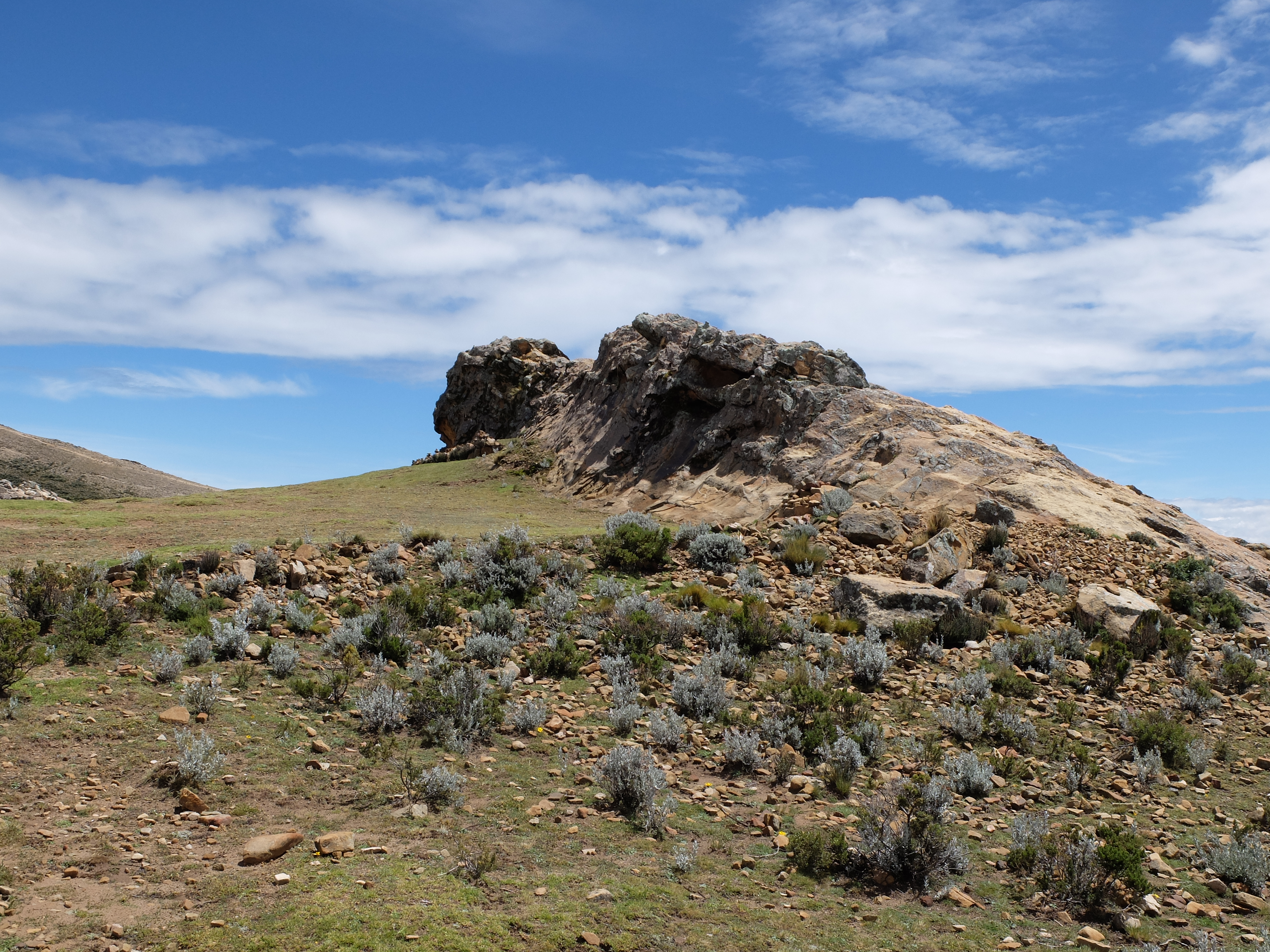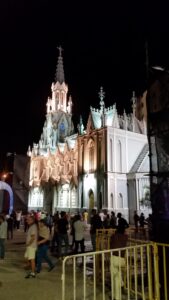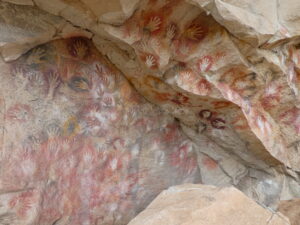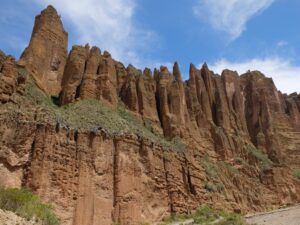
At the northern end of Isla del Sol, an island in the middle of Lake Titicaca, are the remains of one of the most sacred sites for the Quechua people, popularly known as the Incas. Before the empire was crushed by the Spaniards, traveling to the island was an obligatory annual pilgrimage for the Quechua people, their Mecca. Why was it so holy?

The island is located on the Bolivian side of the borderline with Peru that divides Lake Titicaca, the massive body of water near both the Inca’s former capital city at Cuzco and modern La Paz. The lake had long been important as a source of food and water for the Tiwanaku people, a sophisticated, powerful tribe before the Incas, and remained commercially important later, even for the Spaniards. The Spaniards developed banking offices on the now Peruvian banks of the lake, at Juli, to collect taxes from the tribal people and handle gold mined from the Andes mountains. In that small town four large churches still stand, corresponding to the four different tribes in the area. Richly frescoed and decked out with oil paintings by local artisans, these churches aimed to convert the indigenous to Christianity.
The terrible history of what happened around 1200AD, however, amplified the lake’s importance in tribal legend. That flood overwhelmed the Tiwanaku population and smashed the stonework buildings of their central city down valley from the lake. The Incas emerged as a force from the military survivors of this cataclysm, after they escaped to Cuzco.
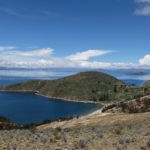
Today a powered boat ride to Isla del Sol from Copacabana on the Bolivian shore requires a little over an hour. It must have taken several hours for pilgrims to reach the island on the reed boats that used to navigate the lake. Most of the island is desert-like, dry scrub-land. But the hills surrounding the three villages receive just enough rain and irrigation to support terraced farming that dates back thousands of years. Those villages occupy the best bays of the island, on the wetter eastern shore, but preoccupy themselves more now with accommodating and ferrying tourists.

During Inca times, pilgrims arrived on the southern end where the remains of an Inca palace still stand. For them too there was plenty of welcoming accommodation at what is now the village of Yumani, a breath-squeezing climb of 300 meters above a water level already at 3800 meters (12,500 feet) over sea level.

Halfway up to the village, a natural spring still delivers holy water through three conduits. Even today, believers – and there are many who adhere to the old Quechua and Aymara tribal practices – anoint themselves ritually with the water from each conduit.
And, as they do so, they pledge still the three main commandments of their tribal forefathers (out of many, many more ethical demands):
- Do not steal
- Do not lie
- Do not be lazy

The main purpose of visiting the island, for pilgrims then and tourists now, is to walk the 10 kilometers or so to the north end of the island on trails the Incas built for the purpose with stones, some of which still survive intact. At this end of the island, a barren rocky finger at about a hundred meters above the lake stretches into it.
Once they arrived at the north, pilgrims passed three gates later destroyed by the Spaniards as heathen totems. There the pilgrims invoked the gods and committed themselves to living a good life, repeating the three commandments.

Priests, who lived and trained novices in a labyrinthine stone structure there, assisted the pilgrims in their prayers and offerings to the gods. The remains of that building still demonstrate the fine stonework of the place on its sloping hillside location. Yet, except for the attention from other tourists today, you could easily miss the reason for all this devotion, a hump of rough rock rising about 10 meters from the ground.
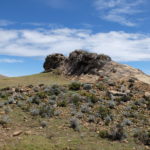
Here, pilgrims would re-dedicate themselves to ethical behavior and devotion, as well as celebrate the rebirth of light in the world. Their myths recalled a time when the people behaved sinfully and failed to pay respect to the gods. The sun god and moon god were endangered by such evil. So the puma, or titi, – a mythical figure that the starwatchers could outline in the stars, and one that symbolized protective earthly power – leaped up to the sky and snatched the sun and moon. The puma dropped back to earth and hid the sun and moon in that hump-like rock on Isla del Sol. If you squint just right, the rock even looks like a puma head, similar to those crafted in clay by the Tiwanaku and Quechua.
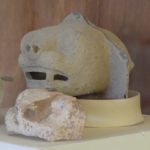
And the lights went out for the people: the sun and its warmth, its nurturing power and its delineation of the planting seasons; the moon and its night light, as well as its revelation of planting times. The darkness remained and the people suffered. When they finally repented, and began to honor the gods again, it was time for the sun and moon to be released. So the principal deity, the creator god Viracocha, released the sun and moon through slots in the rock you can still see. These lights rose again into the sky.
So each year the pilgrims would come to commit themselves to the right behavior and due divine respect…lest the lights go out again.
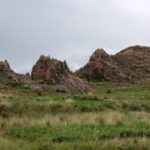
NOTE: On the Peruvian side of the lake, modern day pilgrims often make the meditative journey to a huge portal at Aramu muru. It’s a virtual gateway carved in red sandstone near the town of Juli, about an hour’s drive from Puno, and legendary as a passage to the gods. There over the ages, it is said, some have crossed to other dimensions, spiritually and actually, with the help of local shamans.
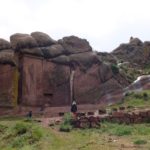
Set amid a jagged set of ridges, striking in themselves, the central doorway and the two vertical shafts that define its edges offer three niches perfect for contemplation and meditation.

Local descendants of pre-Columbian tribes still consider the site holy and practice elaborate ceremonies in tribute to Pachamama, the earth mother, meditating on her power and the potential of the gateway. Following these rituals with a believer, we didn’t quite feel transported during our visit. Yet, standing in the three niches and pressing our heads to the rock, we could hear the shallow echo of our breathing return as if from within.)
(Also, for more pictures from Peru or Bolivia, CLICK THE COUNTRY NAME to view the slideshow at the end of each’s itinerary page.)


